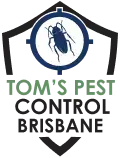Prompt, Affordable Same-Day Pest Control in Brisbane – From $129.
- Home
- Pest Treatments
- Termite Control
- Ant Pest Control
- Bed Bug Treatment
- Beetle Pest Control
- Bird Control
- Borer Pest Control
- Cockroach Control
- Flea Treatment
- Fly Control
- Fox Trapping
- Mite Control
- Mosquito Pest Control
- Moth Control
- Possum Removal Service
- Rodent Control
- Silverfish Treatment
- Spider Control Treatment
- Wasp Control Services
- End of Lease Pest Control
- Commercial Pest Control
- Office Pest Control
- Restaurants & Cafes Pest Control
- Hospitality Pest Control
- Education Facilities Pest Control
- Hospital & Aged Care Pest Control
- Pest Control Food Industry
- Factories & Warehouses Pest Control
- Government Buildings Pest Control
- Assets & Facilities Pest Management
- Farming and Agriculture Pest Control
- Strata Pest Control
- Construction Pest Control
- Termites
- Pest Info
- Pest Inspections
- Contact



